#Władysław II Jagiełło
Explore tagged Tumblr posts
Text
History Rant??
I love you wikipedia because what the fuck do you mean we don't exactly know how old Władysław II Jagiełło/Jogaila (Jadwiga of Poland's husband) was???

that's a ten year difference. Granted, Jadwiga doesn't give us a better date, giving two dates with a 4 months difference between them but at least that's better than a whole decade.
I'm just wondering how did that happen, because he came from what I assume is a aristocratic family (his father was a Grand Duke and his mother was the daughter of a King).
I'm also concerned because Jadwiga was born between 3 October 1373 and 18 February 1374, which means that at the very least Jogaila was a decade older than her. I guess it's not really strange when it comes to medieval/royal marriages but it still annoyes me that there is no clear date of birth.
I'm studying prehistoric archaeology so I shouldn't really complain about the fact that historians can't keep track of someone's date of birth but it still confuses me. Apperently Jogaila spent his youth on his father's estate so did he just appear one random day as a toddler or as a full grown 10 year old???
#jadwiga of poland#jogaila#Władysław II Jagiełło#Wladyslaw II Jagiello#polish history#lithuanian history#talking stuff
11 notes
·
View notes
Text







#jogaiła#sonka holszańska#zofia holszańska#jan hińcza#władysław ii jagiełło#korona królów#the crown of the kings#korona krolow#koronakrolowedit#perioddramaedit#perioddramagif#historicalgifs#korona krolow jagiellonowie
8 notes
·
View notes
Text
Unlocked a forbidden memory of when my grandma took me to a museum and bought me gypsum figurines of the historical figures Zawisza the Black and king Władysław Jagiełło and I immediately started playing with them as if they were in a romantic relationship.
I don't think my sheltered ass even knew what gay people were at age 6.
Anyway gay king and his gay knight fighting against their Christian opressors. Gay ppl:


#i would read the shit out of this story actually#zawisza czarny#władysław ii jagiełło#poland#i guess
14 notes
·
View notes
Text
Polish Pedro Pascal

26 notes
·
View notes
Text

Władysław II Jagiełło. By Michał Godlewski.
#Władysław II Jagiełło#Grand Duke of Lithuania#Jagellonian dynasty#Dom Jagiellonów#Jogailaičių dinastija#Korona Królestwa Polskiego#full length portrait#Michał Godlewski#full-length portrait#królestwo polskie
4 notes
·
View notes
Text
al things considered — when i post my masterpiece #1386

first posted in facebook january 19, 2025
józef simmler -- "queen jadwiga's oath" (1842)
"[in the year 1386], grand duke of lithuania jogaila (having been baptised on february 15 in wawel cathedral, kraków, and on february 18 married jadwiga, 12-year-old queen regnant of poland) is crowned władysław II jagiełło, king of poland, beginning the jagiellonian dynasty" … wikipedia
"a movie without at least one live music performance is like a pope without artificial teeth? … aki kaurismäki
"it appears that 1386 was quite a year in poland … not only was a 12 year old child crowned the country's first woman monarch (and you think WE might have problems on january 20th?!?!?), but judging by her husband's name, he might be a distant relative (or the namesake?) of the legendary polka musician li'l wally jagiełło" … al janik
#józef simmler#queen jadwiga's oath#1386#wikipedia#kraków#grand duke of lithuania jogaila#władysław II jagiełło#aki kaurismäki#a pope#artificial teeth#li'l wally jagiełło#polka#al things considered
0 notes
Photo

Unprecedented 'Fifty!' finally got the music industry involved.
#Fifty Shades Freed (Original Motion Picture S#Cupid#Composer#Dispute resolution#Fixative#An Seong-il#Korea#Władysław II Jagiełło#Jeong Ji-an
0 notes
Text
SIDE 2 ROUND 2


this time in Rulers of Poland Tournament: a guy who married a 12 year old, and a guy who got castrated with a leather string
20 notes
·
View notes
Text
Wprowadzenie
W ciągu dziejów fryzury męskie władców często odzwierciedlały ich władzę i status społeczny. Od wyszukanych peruk po skomplikowane warkocze, fryzury europejskich monarchów w XIV do XIX wieku nie były wyjątkiem. Fryzury te nie tylko były symbolem ich władzy, ale także sposobem na okazanie swojego bogactwa i statusu społecznego. Niektóre z najbardziej charakterystycznych fryzur z tego okresu to proszkowe peruki francuskiego dworu, płynące włosy z ery romantyzmu i schludne fryzury z przedziałkiem z epoki wiktoriańskiej. Przyjrzyjmy się bliżej fascynującym i często ekscentrycznym fryzurami europejskich władców od XIV do XIX wieku.
Einfluss religii i kultury na fryzury męskie
Fryzury męskie w Europie w XIV wieku były zdominowane przez wpływy religijne i kulturowe. Włosy były często układane w proste, mocno przyklejone kaski. W XIV wieku popularne było noszenie długich włosów, które były opuszczane na plecy lub związane w kucyk. Jednakże, w XVI wieku, fryzury męskie zaczęły zmieniać się pod wpływem renesansu i wzorów z antyku. Włosy były układane w skomplikowane upięcia, często z warkoczami, i często ozdabiane perłami lub innymi ozdobami.
W XVII wieku fryzury męskie stały się jeszcze bardziej skomplikowane i wyszukane, a peruki stały się powszechne. W XVIII wieku peruki zaczęły być coraz bardziej popularne, szczególnie we Francji i Anglii. Włosy były często pudrowane, aby uzyskać biały kolor, a peruki były często ozdabiane kwiatami, kokardami lub innymi ozdobami.
W XIX wieku fryzury męskie zaczęły się upraszczać, a peruki zaczęły wychodzić z mody. Mężczyźni zaczęli nosić włosy krótkie lub średniej długości, często z przedziałkiem pośrodku. Fryzury były schludne i proste, a włosy często były przyklejane do głowy przy pomocy specjalnych preparatów.
Fryzury renesansowe
Włosy w epoce renesansu były układane w skomplikowane upięcia, często z warkoczami i ozdobami. Fryzury były inspirowane wzorami z antyku, a mężczyźni zaczęli nosić długie, falujące włosy. Peruki stały się również popularne w epoce renesansu, szczególnie wśród władców i arystokracji.
Włosy były często pudrowane, aby uzyskać biały kolor, a peruki były ozdabiane kokardami, perłami i innymi ozdobami. Fryzury renesansowe były bardzo skomplikowane i wymagały wielu godzin pracy, aby je ułożyć.
Włosy były często układane w kaski lub warkocze, a mężczyźni nosili również peruki. W XVIII wieku peruki stały się coraz bardziej skomplikowane, a pudrowanie włosów stało się popularne.
Fryzury epoki baroku
Fryzury męskie w epoce baroku były bardzo skomplikowane i ozdobione perukami i kwiatami. Włosy były często pudrowane, aby uzyskać biały kolor, i układane w skomplikowane upięcia. Fryzury były często bardzo ciężkie i wymagały specjalnych drutów, aby utrzymać je na głowie.
Włosy były często układane w kaski lub warkocze, a mężczyźni nosili również peruki. W XVIII wieku peruki stały się coraz bardziej skomplikowane, a pudrowanie włosów stało się popularne.
W epoce baroku mężczyźni zaczęli nosić długie, falujące włosy, często związane w kucyk. Peruki stały się również popularne, szczególnie wśród władców i arystokracji. Włosy były pudrowane i często ozdabiane kwiatami, kokardami i innymi ozdobami.
Fryzury epoki rokoka
Fryzury męskie w epoce rokoka były bardzo eleganckie i skomplikowane. Włosy były często pudrowane, aby uzyskać biały kolor, i układane w skomplikowane upięcia. Fryzury były ozdobione perłami, kwiatami i innymi ozdobami.
Włosy były często układane w kaski lub warkocze, a mężczyźni nosili również peruki. W XVIII wieku peruki stały się coraz bardziej skomplikowane, a pudrowanie włosów stało się popularne.
W epoce rokoka mężczyźni zaczęli nosić długie, falujące włosy, często związane w kucyk. Peruki stały się również popularne, szczególnie wśród władców i arystokracji. Włosy były pudrowane i często ozdabiane kwiatami, kokardami i innymi ozdobami.
Fryzury neoklasyczne z końca XVIII wieku
W epoce neoklasycznej mężczyźni zaczęli nosić proste, schludne fryzury. Włosy były często przyklejane do głowy przy pomocy specjalnych preparatów, a przedziałek pośrodku był bardzo popularny. Peruki wychodziły z mody, a pudrowanie włosów stało się coraz rzadsze.
Fryzury męskie w epoce neoklasycznej były bardzo proste i schludne. Włosy były często przyklejane do głowy przy pomocy specjalnych preparatów, a przedziałek pośrodku był bardzo popularny.
W epoce neoklasycznej mężczyźni zaczęli nosić długie, falujące włosy, często związane w kucyk. Peruki stały się również popularne, szczególnie wśród władców i arystokracji. Włosy były pudrowane i często ozdabiane kwiatami, kokardami i innymi ozdobami.
Fryzury romantyczne
W epoce romantycznej mężczyźni zaczęli nosić długie, falujące włosy. Fryzury były proste i naturalne, a peruki wychodziły z mody. Włosy były często przyciemniane, aby uzyskać bardziej naturalny kolor.
W epoce romantycznej mężczyźni zaczęli nosić długie, falujące włosy. Fryzury były proste i naturalne, a peruki wychodziły z mody. Włosy były często przyciemniane, aby uzyskać bardziej naturalny kolor.
Fryzury męskie w epoce romantycznej były bardzo proste i naturalne. Włosy były noszone długie i falujące, często związane w kucyk. Peruki wychodziły z mody, a warkocze były rzadziej używane.
Fryzury wiktoriańskie
W epoce wiktoriańskiej mężczyźni zaczęli nosić proste, schludne fryzury. Włosy były często przyklejane do głowy przy pomocy specjalnych preparatów, a przedziałek pośrodku był bardzo popularny. Fryzury były bardzo eleganckie i schludne, a peruki wychodziły z mody.
Włosy były często noszone krótkie lub średniej długości, a przedziałek pośrodku był bardzo popularny. Fryzury były bardzo schludne i proste, a włosy często były przyklejane do głowy przy pomocy specjalnych preparatów.
Wpływ polityczny i społeczny na fryzury męskie
Fryzury męskie w Europie w XIV do XIX wieku często były narzędziem politycznym i społecznym. Władców i arystokrację często zobowiązywano do noszenia określonych fryzur, aby okazać lojalność wobec króla lub rządu. Fryzury były również sposobem na okazanie swojego statusu społecznego i bogactwa.
W XVIII wieku peruki stały się bardzo popularne, szczególnie we Francji i Anglii. Włosy były często pudrowane, aby uzyskać biały kolor, a peruki były często ozdabiane kwiatami, kokardami lub innymi ozdobami.
W XIX wieku fryzury męskie zaczęły się upraszczać, a peruki zaczęły wychodzić z mody. Mężczyźni zaczęli nosić włosy krótkie lub średniej długości, często z przedziałkiem pośrodku. Fryzury były schludne i proste, a włosy często były przyklejane do głowy przy pomocy specjalnych preparatów.
Dziedzictwo fryzur męskich z XIV do XIX wieku
Fryzury męskie z XIV do XIX wieku pozostawiły wiele śladów w dzisiejszej modzie i kulturze. Niektóre fryzury, takie jak przedziałek pośrodku i proste, schludne fryzury, są wciąż popularne, szczególnie wśród mężczyzn. Mężczyźni nadal noszą długie włosy i warkocze, a peruki są używane w teatrze i filmie.
Fryzury męskie z XIV do XIX wieku były często skomplikowane i wymagały wielu godzin pracy, aby je ułożyć. Włosy były pudrowane i często ozdabiane kwiatami, kokardami i innymi ozdobami. Fryzury te były nie tylko symbolem władzy i statusu społecznego, ale także wyrazem sztuki i kultury.
Podsumowanie
Fryzury męskie europejskich władców z XIV do XIX wieku były nie tylko symbolem władzy i statusu społecznego, ale także wyrazem sztuki i kultury. Włosy były pudrowane, układane w skomplikowane upięcia, a peruki były ozdabiane kwiatami, kokardami i innymi ozdobami. Fryzury te pozostawiły wiele śladów w dzisiejszej modzie i kulturze, i nadal inspirują projektantów i artystów na całym świecie.
#fryzura królów europejskich#KrólPrusCesarzNiemiecWilhelmIIHohenzollernfryzura#Leopoldzie II#królu Belgów fryzurą i brodą#Król Jan III Sobieski - jaką miał fryzurę#Konstytucja 3 Maja#Stanisław August Poniatowski i jego fryzura#Jaką fryzurę miał Władysław Jagiełło podczas bitwy pod Grunwaldem w 1410 roku#Louis Philippe I - Władcza Fryzura i Wybuch Rewolucji Lipcowej#Fryzura Króla Francji Ludwika XIV#Alfonso XII - Twórca pokoju i mężczyzna ze stylowymi bokobrodami
1 note
·
View note
Text
minigame XVIII
👑Matejko's princes and kings of Poland edition👑
Jadwiga banned once again bc cmon. I know you guys. but i prommy we will have a best Jadźka painting minigame at some point









again - my own selection. see all the other portraits here. portraits are in black&white because they are the og matejko drawings - the coloured versions some of you may know are the work of his students and that series is not complete anyway.
minigame suggested by @gniew7777
#minigame#polls#polska#poland#jan matejko#check out the other portraits cuz konrad mazowiecki is like kinda sexy. who said that
91 notes
·
View notes
Text

“Unique” Medieval Gold Ring Found in Poland
An elaborately decorated medieval gold ring, likely to be from the 11th or 12th century, has been discovered buried beneath Wawel Castle, the former seat of Poland’s kings in the city of Kraków. It is the only one of its kind ever found on Polish territory. “Wawel never ceases to surprise us,” wrote the castle museum on social media while announcing the “exceptional discovery” on Monday.
The ring is decorated with opposing faces, making it extremely unusual. Only a few early medieval gold rings have been found in Poland and they are devoid of ornamentation or have simple geometric patterns.
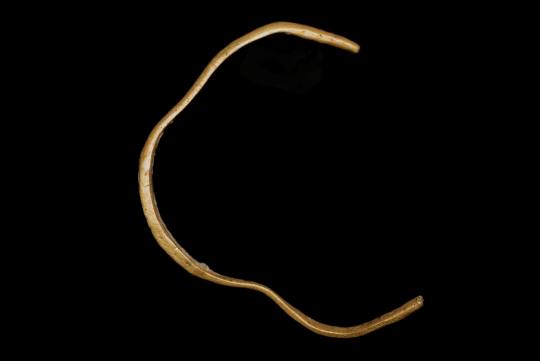

That makes the latest find “unique”, says Jerzy Trzebiński from the castle museum’s archaeology department. “This is the only example in which human images (or figural ones in general) are depicted on an early medieval ring from Poland.”
He also notes that the item contains no references to Christianity (which had begun to be established in Poland from the 10th century) and suggests that the two faces could represent Janus, the two-faced Roman God.
Given that the form of the ring is typical for that period in Poland, Trzebiński believes it was probably a local product and could have belonged to a member of the elites under the Piasts, Poland’s first ruling dynasty from when the state was established in the 10th century until the 14th century.
The item was discovered during archaeological research in the basement of the so-called Danish Tower (Wieża Duńska), one of the castle’s four residential towers.


It was built from the late 14th to early 15th century on the orders of King Władysław II Jagiełło as part of the reconstruction of a previously existing tower. The tower’s facade was then added in the 16th century.
The building took its name from one of its first guests, Eric, king of Denmark, Sweden and Norway (often known as Eric of Pomerania). He stayed there in 1424 while attending the coronation of King Władysław’s fourth wife, Sophia of Halshany.
The ring was found on top of the remains of a former stone structure, probably a defensive rampart. The history of Wawel Castle dates back to the 11th century, but long before then the hill that it sits upon had been an important seat of power.
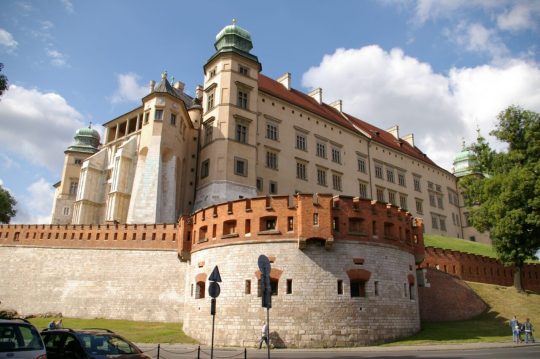
#“Unique” Medieval Gold Ring Found in Poland#Wawel Castle#golf#gold jewelry#ancient artifacts#archeology#archeolgst#history#history news#ancient history#ancient culture#ancient civilizations#medieval history
69 notes
·
View notes
Note
Since you got so many postive reactions, I'll also add something Your story is boring. Its too long, its too complicated, the plot is too long, nothing happens, it's not RA at all any more, it has nothing to do with canon! Halt is a joke, there is nothing left of him. This is annoying, the whole story is annoying! Secondly, you dramatize the story too much. Why is Halt's mother a child when she gave birth to him? Don't you have enough angst from the plot, then you have to add such elements and make the king a pedo? A bit pathetic, if you ask me. Why is she so young? Why would Caitlyn be married so young? Nobody did that in the canon! Second, why, for God's sake, is everyone there gay? In the Middle Ages? What's that supposed to be? Third, you don't respect your own readers. You post new chapters without any rhythm, once every week, once every month, instead of sticking to any routine. People don't want to read something so inconsistent, it's stupid, it's annoying. Oh and all those references to Catholicism in the plot in and your made up religion. Is it really necessary?
It's a shame, because this could have been a really cool story… you still have a lot to learn, good luck!
Hello, I would say thanks for contacting, but then it would probably sound ironic. Well.
I understand that the pace of the story may not suit everyone, especially people who prefer short stories. However, I made it clear from the outset that the story would be long and complex. It's a whole AU and yes, I love worldbuilding and I won't apologise for that. I care about the details, but I also care about a balanced sinusoid of action. This isn't an action movie where you'll eat popcorn and laugh at the jokes, it's a marathon geared towards experiencing the story a little deeper. If it annoys you, I'm not sure why you don't just give up reading it…. you refer to the facts revealed in recent chapters, so you've at least made it to chapter 41, even though the story annoys you so much. Why? And why should it be my fault?
Let the numbers speak for me. Jadwiga Andegaweńska, King of Poland, married Władysław Jagiełło, Grand Duke of Lithuania, at the age of 12. He was 35 years old at the time. He took his last wife at the age of 70. She was named Zofia Holszańska, she was 17. Henry VIII of England took Catherine Howard as his wife when she was 17. He was 49. The youngest queen consort was Isabella of Valois, second wife of Richard II, aged 6 years 11 months and 25 days when she was married to him in 1396. The average age at which women were given in marriage in the Middle Ages was 12-14 years. It was only at the end of this era that this age changed to the late teens (16-19). The Renaissance brought a shift in this average to the early 20s. Yes, I am aware that we do not have such situations in the canon. Probably because the canon is a conglomeration of several different visions of the Middle Ages, which the author did not see fit to separate. Armaments, schooling, lack of illiteracy, developed medicine and finally, social realities all disagree. I am sorry to have to tell you this, but no princess married a plebeian knight because he was nice and she loved him. No princess ran around in the woods with a slingshot and none of them was likely to be allowed to become a super secret special task soldier because her parents couldn't cope with her upbringing. Canon has nothing to do with historical reality. In many ways it also misses the mark with my story. It's a fanfic. It's just a story, invented by me and loosely based on canon. It's AU - Alternative Universe. Where there's magic, religious wars and various things like that. But some of the stuff in there comes as a result of my fascination with history and the development of societies in different eras. Hence, certain phenomena, such as just the treatment of women, the age at which they were given in marriage, illiteracy, pestilence, economic dualism and sending children to war, appear in the storyline. Eileen is a monument to women, girls who were given in marriage to bear children to kings, to endure their outbursts of anger, beatings, rape and other forms of violence. Her story is very important to me and no, it is not there just to add drama. I'm sorry you see it that way.
Because we are human, we have always existed and we will always exist. Because it is a story written by a queer person and because as an author I can do so. I also pointed this out in the tags. Too many queer people reading books couldn't find themselves in the plot. I only write queer stories. And if in a story about blood magic, prophecies, human sacrifice, violence, wars and betrayals, you have the biggest problem to a few queer people in the plot, it's no longer my fault.
Listen, I'm really trying not to be mean. Let me say this as gently as I can. I'm not your friend. I'm a random stranger on the internet that you know nothing about. I'm not your school mate for you to talk to me like that. I'm an adult, I work full time, I'm writing my Master's thesis and I'm taking care of two children. I'm sorry that my few hours a week that I can spend doing something for myself, are not enough for me to write a 16-19k chapter once a week. How annoying and mean of me. Wow.
I wasn't inspired by Catholicism. But it's interesting that of all the world religions, this is the one that came to your mind. If you associate a fictional religion based on blood sacrificing, heroising self-harm and sacrificing children, cruelty to captives and hateful contempt for women with Catholicism, then who am I to argue.
It's been so much fun writing to you. And you don't offend me by saying I have a lot to learn. We all have. If one stops learning, one dies. And I still have a whole lot of queer, boring, annoying stories to write. Have a lovely day! And may your toilet seat be cold af at the middle of the night :)
#rangers apprentice#ranger's apprentice#rangers apprentice fanfiction#the iron song fic#queer pride#historical inaccuracies
12 notes
·
View notes
Text












#sonka holszańska#zofia holszańska#władysław ii jagiełło#świdrygiełło#korona królów#the crown of the kings#korona krolow#koronakrolowedit#perioddramaedit#perioddramagif#historicalgifs#korona krolow jagiellonowie
14 notes
·
View notes
Text

PL:
Zamek Hohenstein, Olsztynek, Polska
Wzniesiony w latach 1350-1366 w pobliżu granicy komturstwa ostródzkiego z Mazowszem na polecenie Günthera von Hohenstein.
W 1410 roku, po bitwie pod Grunwaldem, która została stoczona kilkanaście kilometrów od Olsztynka, zamek został opanowany przez mieszczan i oddany we władanie Władysława II Jagiełły. Po powrocie w ręce krzyżackie, uszkodzono go podczas wojny polsko – krzyżackiej z 1414 roku i podczas wojny trzynastoletniej.
Podczas ostatniej wojny zakonu z Polską, w grudniu 1519 roku Olsztynek zajęły wojska hetmana koronnego Mikołaja Firleja, które po kapitulacji załogi w sile dwustu żołnierzy, rozpoczęły trwającą ponad rok okupację zamku. Po sekularyzacji zakonu krzyżackiego w 1525 roku miasto przyłączono do Prus Książęcych, a zamek przeznaczono na siedzibę administracji książęcego starosty.
1651 i 1685 roku zabudowania zamkowe niszczone były pożarami. W końcu XVIII wieku po przebudowie urządzono w nich biura pruskiej intendentury, a następnie wyburzono część średniowiecznej zabudowy. W latach 1847-1849 pozostałości przekształcono w stylu neogotyckim i zamieniono na gimnazjum. Po zniszczeniach II wojny światowej, odbudowane fragmenty zamku włączone zostały w budynek szkolny.
EN:
Hohenstein Castle, Olsztynek, Poland
Erected between 1350 and 1366 near the border of the Ostróda commandry with Masovia, at the behest of Günther von Hohenstein.
In 1410, after the Battle of Grunwald, fought just a few kilometers from Olsztynek, the castle was seized by the townspeople and handed over to Władysław II Jagiełło. After being reclaimed by the Teutonic Knights, it was damaged during the Polish–Teutonic War of 1414 and the Thirteen Years' War.
During the last war between the Order and Poland, in December 1519, Olsztynek was taken by the troops of Crown Hetman Mikołaj Firlej, who, after the garrison of 200 soldiers surrendered, began an occupation of the castle lasting over a year. After the secularization of the Teutonic Order in 1525, the town was incorporated into Ducal Prussia, and the castle became the administrative seat of the princely starost.
In 1651 and 1685, the castle buildings were damaged by fires. By the late 18th century, after renovations, they were converted into offices for the Prussian commissariat, and part of the medieval structures was demolished. Between 1847 and 1849, the remnants were remodeled in a Neo-Gothic style and converted into a gymnasium. After being damaged during World War II, the rebuilt fragments of the castle were incorporated into a school building.
#olsztynek#poland#polska#architektura#architecture#historia#history#zamek#castle#warmia#warmińsko-mazurskie#budynek#building#widok#krajnobraz#landscape#budowla#krzyżacy#zakon krzyżacki#teutonic order#teutonic knights
2 notes
·
View notes
Text
A series of portraits of the Targaryen dynasty by the renowned Braavosi painter Mateyko Yan
I got inspired by @nanshe-of-nina's artasoiaf series and I thought... huh... there's a set of drawings showing various kings that could work in this context...
(Sorry Polish followers for any brain damage you may get from this post)
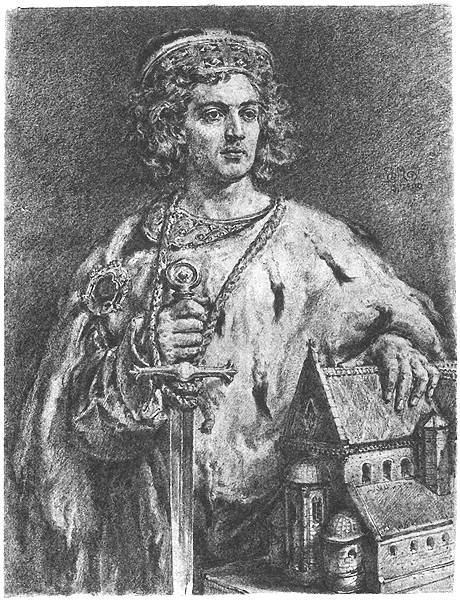

Aegon the Conqueror with his sister-wife, Visenya (Rhaenys' portrait sadly was lost to time).
[Bolesław IV the Curly as Aegon and Anna Jagiellon as Visenya]

Maegor the Cruel
[Bolesław III Wrymouth]


Jaehaerys I and his sister-wife Good Queen Alysanne (Jaehaerys' portrait shows him by the end of their reign, while Alysanne is portrayed as a young queen).
[Mieszko III the Old and Richeza of Lotharingia]
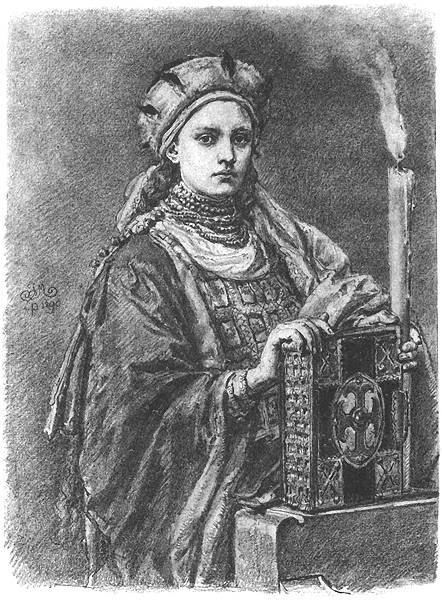
Rhaenys Targaryen, the Queen who Never Was
[Doubravka of Bohemia]

Daemon the Rogue Prince (here portrayed with the coat of arms of the house Arryn; possibly during his stay in the Vale of Arryn as the husband of lady Rhea Royce)
[Leszek the White]

Viserys II
[Władysław II Jagiełło/ Jogaila]
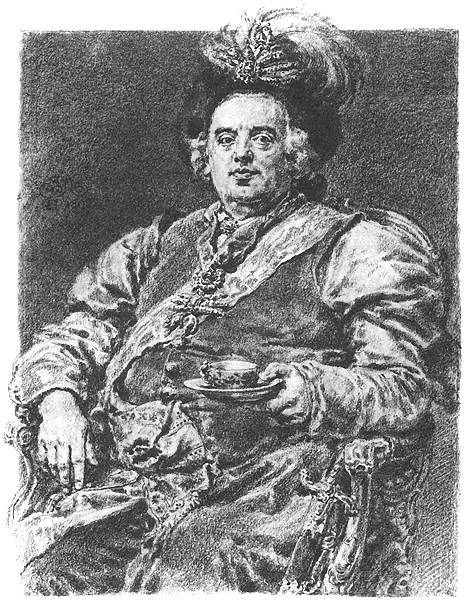
Aegon IV the Unworthy
[Augustus III]
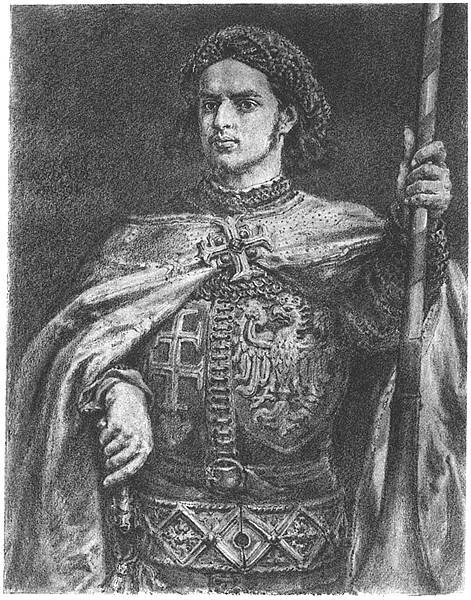

Maron Nymeros Martell, the ruling prince of Dorne, and his sister Myriah, the queen consort of Daeron II
[Władysław III of Varna and Jadwiga]
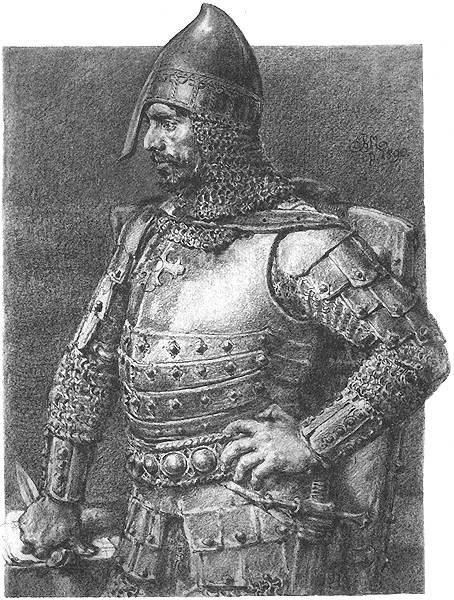
Baelor Breakspear, son of Daeron II
[Konrad I of Masovia]

Aerion Brightflame, son of Maekar I
[Władysław III Spindleshanks]
#I hope I managed to capture their Vibes#also Matejko gave too many people dark hair so I didn't have that much to choose from#lmao#asoiaf#a song of ice and fire#fire and blood#targaryen#I feel sick in the head for making it tbh#aegon targaryen#visenya targaryen#alysanne targaryen
8 notes
·
View notes
Text
Historical Muse: Władysław II Jagiełło (Jogaila)

Faceclaim: Sebastian Skoczeń
Basic Info
Hair Color: Dark brown
Eye Color: Brown
Height: 6'0"
Body Type: Athletic
Notable Events: Became King of Poland by marrying Jadwiga, unified Poland and Lithuania, defeated the Teutonic Order, faced challenges from nobility and religious conflicts
Gender: Male
Legacy: Established a strong Polish-Lithuanian union, expanded territories and influence, left a complex legacy of power struggles and religious tensions
Birthplace: Vilnius, Grand Duchy of Lithuania
Residence: Various royal residences in Poland and Lithuania
Languages: Lithuanian, Polish, possibly others
Connections
Family: Algirdas (Father), Jadwiga of Poland (Wife), Vytautas (Cousin), Władysław III and Casimir IV (Sons)
Spouses: Jadwiga of Poland, Anna of Cilli, Elisabeth Granowska, Sophia of Halshany
Personality
Positive Traits: Diplomatic, strategic, resilient
Negative Traits: Ruthless, cautious, politically pragmatic
Neutral Traits: Assertive, adaptive
Fears: Loss of power, betrayal, instability
Hobbies: Hunting, military strategy, horseback riding
1 note
·
View note